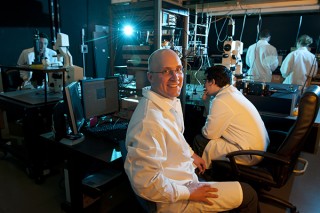Scientists at University of Delaware are a step closer to creating self-assembling devices based on functional materials derived from nanoparticles.
 Eric M. Furst from the University of Delaware
Eric M. Furst from the University of Delaware
A collaborative team of engineers and scientists led by Eric M. Furst, professor of chemical and biomolecular engineering at the University of Delaware and scientists from NASA, Zin Technologies, European Space Agency and Lehigh University have studied the microscopic particles called colloids to gain insight into the self assembly of nanoscale building blocks into ordered structures.
The study which is titled, “Multi-scale kinetics of a field-directed colloidal phase transition,” involved the analysis of paramagnetic colloids under the periodic influence of applied external magnetic field. The research team observed the transition of the particles from a solid, randomly oriented material into highly ordered crystals at a particular frequency and strength of the applied magnetic field.
According to Furst, this is the first time such a directed phase separation of particles has been observed. Furst further commented on the significance of the study findings wherein the observed self-assembly can pave the way for future innovations to engineer materials that can organize themselves.
Through collaboration with NASA, the team was able to observe the suspensions aboard the International Space Station. The location was chosen owing to the effect gravity has on the assembly and disassembly of particles. A significant observation made by the team was the way in which the particles aligned themselves. The arrangement formed by the particles initially coarsened and grew rapidly. They then separated only to realign into a crystal. The scientists believe that this concept can be extended to a scalable technique for nanotechnology.